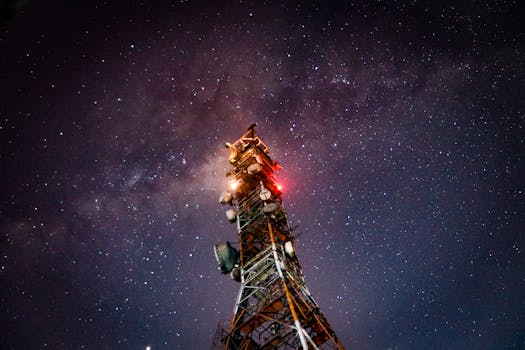MEO Satellites: Revolutionizing Global Communication with Medium Earth Orbit Technology

MEO Satellites: Revolutionizing Global Communication with Medium Earth Orbit Technology
MEO satellites, or Medium Earth Orbit satellites, are a type of satellite that operates in an orbit between 2,000 and 36,000 kilometers above the Earth’s surface. This orbit is higher than Low Earth Orbit (LEO) satellites but lower than Geostationary Orbit (GEO) satellites. MEO satellites are gaining popularity due to their unique advantages, which make them an attractive option for various applications, including global communication, navigation, and Earth observation.
At the beginning of our discussion on MEO satellites, it’s essential to understand the basics of satellite technology and how MEO satellites differ from other types of satellites. Traditional GEO satellites, which operate at an altitude of approximately 36,000 kilometers, have been the backbone of global communication for decades. However, they have some limitations, such as high latency and limited coverage at higher latitudes. MEO satellites, on the other hand, offer faster and more reliable connections, making them an ideal choice for applications that require low latency and high-throughput communications.
Benefits of MEO Satellites
MEO satellites have several benefits that make them an attractive option for various applications. One of the primary advantages of MEO satellites is their lower latency compared to GEO satellites. Since MEO satellites are closer to the Earth’s surface, the signal travel time is reduced, resulting in faster and more responsive communications. This makes MEO satellites ideal for applications that require real-time communication, such as video conferencing, online gaming, and remote healthcare.
Another significant benefit of MEO satellites is their wider coverage area. MEO satellites can provide coverage to a larger area than LEO satellites, making them suitable for applications that require global or regional coverage. Additionally, MEO satellites can provide higher-throughput communications than LEO satellites, making them ideal for applications that require large amounts of data to be transmitted, such as satellite broadband and Earth observation.
Applications of MEO Satellites
MEO satellites have various applications, including global communication, navigation, and Earth observation. One of the most significant applications of MEO satellites is in the field of global communication. MEO satellites can provide fast and reliable internet connectivity to remote and underserved areas, bridging the digital divide and enabling access to essential services like education, healthcare, and financial transactions.
MEO satellites are also used in navigation systems, such as the Global Positioning System (GPS) and the European Galileo system. These systems rely on a constellation of MEO satellites to provide location information and timing signals to receivers on the ground. The use of MEO satellites in navigation systems enables accurate and reliable positioning, which is essential for various applications, including aviation, maritime, and land transportation.
Earth observation is another significant application of MEO satellites. MEO satellites can be used to collect data on the Earth’s surface, including weather patterns, ocean currents, and land use. This data can be used for various applications, such as weather forecasting, climate monitoring, and natural resource management. The use of MEO satellites in Earth observation enables the collection of high-resolution data, which can be used to support decision-making in various fields, including agriculture, urban planning, and disaster response.
Challenges and Future Directions
Despite the benefits and applications of MEO satellites, there are several challenges that need to be addressed. One of the primary challenges is the high cost of launching and operating MEO satellites. The cost of launching a MEO satellite can be significant, and the satellite must be designed to operate for an extended period, typically 10-15 years, to be cost-effective.
Another significant challenge is the risk of interference from other satellites and terrestrial systems. MEO satellites operate in a crowded frequency band, and there is a risk of interference from other satellites and terrestrial systems, which can affect the performance and reliability of the satellite. To mitigate this risk, satellite operators must carefully plan and coordinate their satellite operations to minimize the risk of interference.
In conclusion, MEO satellites are revolutionizing global communication with their unique advantages, including lower latency and wider coverage areas. The applications of MEO satellites are diverse, ranging from global communication and navigation to Earth observation. However, there are challenges that need to be addressed, including the high cost of launching and operating MEO satellites and the risk of interference from other satellites and terrestrial systems. As the demand for satellite-based services continues to grow, MEO satellites are likely to play an increasingly important role in the future of global communication and beyond.



